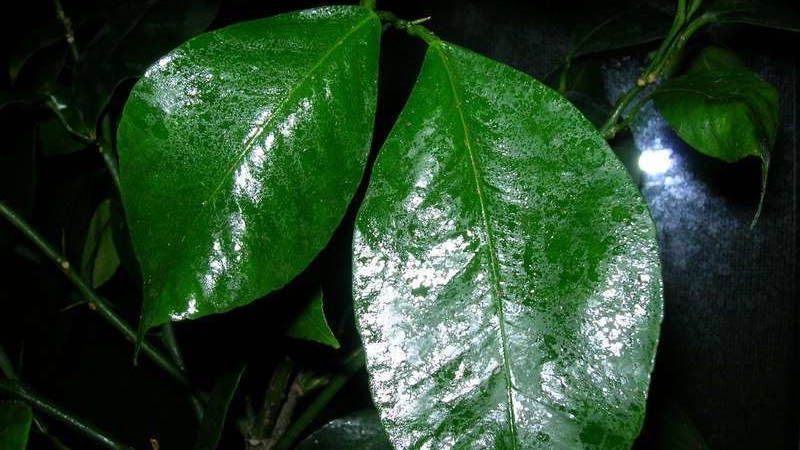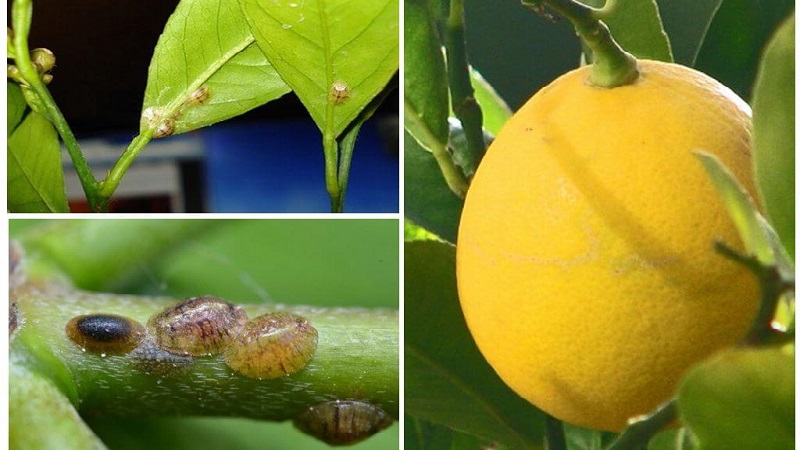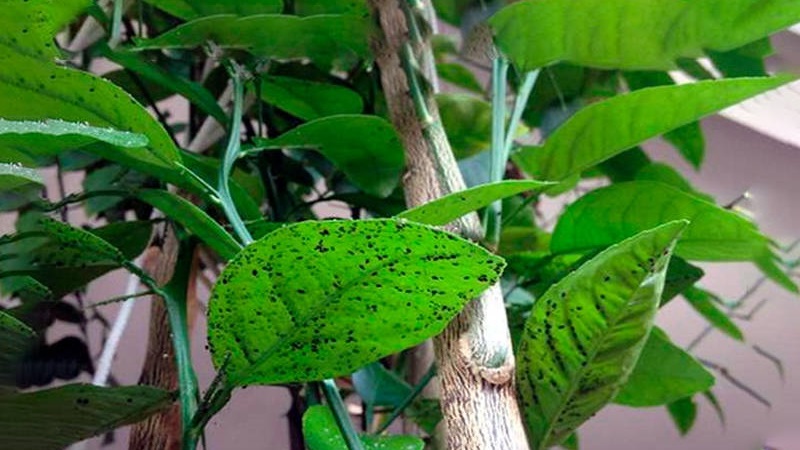Why lemon has sticky spots and what to do with it
Lemon is grown not only indoors, but also outdoors. Bright lemon trees with beautiful fruits and colorful flowers will adorn any garden. But unlike traditional apple and pear trees, the lemon tree needs special care and requires special knowledge of agricultural technology. For example, many gardeners do not know that these are glass drops on lemon sprigs and what to do about it. In the article, we will consider how to treat lemon for stickiness on the leaves and what recommendations to follow.
The content of the article
Causes of sticky leaves
Gardeners identify 2 main reasons for the appearance of a sweet bloom on lemon leaves: excessive soil moisture and the appearance of scale insects or aphids.
Insects affect plants of any age and variety.

If the bloom becomes sweet, this suggests that pests have long settled on the plant. It is not so noticeable at first, but over time it spreads to more leaves.
Attention! If the lemon gives off a sticky substance, that's not always a bad thing. Sometimes the tree attracts ants in this way so that they fight with pests.
What to do if lemon has sticky leaves, how to treat it
When a sticky coating is found on the leaves it is recommended to start treatment immediately.
Overflow
Recommended water the plant no more than 2 times a week... Otherwise, drops of a viscous liquid appear on the leaves. When plaque occurs, the number of watering is reduced, the soil is loosened thoroughly. This improves the circulation of moisture in the ground, water does not stagnate.
Often the problem of stickiness arises on lemons, which are watered with tap water - it contains chlorine, which is harmful to plants. It is better to use thawed, settled or purchased water.
Besides the plaque, waterlogging leads to root decay and diseases... But watering should not be ruled out right away.
It is best to gradually reduce the amount of water. Drying out the soil will not lead to anything good - this is the reason for the development of diseases and low yields.
Shield
When a scabbard is damaged, not only sticky discharge appears on the leaves, but also small spots... With time leaves dry out and fall... The scabbard is dangerous in that it is difficult to see it with the naked eye.
The pest is very small, reaching a length of no more than 3 mm. It enters the site through contaminated soil, other insects, and wind. If a scabbard is found, the lemon is treated with a solution of the "Confidor" preparation every 3-4 days. Particular attention is paid to the root zone and leaves.

Shield most often appears on young and weakened plants... Therefore, experienced summer residents are advised to regularly feed lemon trees with complex fertilizers to strengthen immunity.
It is impossible to delay the destruction of the pest, otherwise a sooty fungus will appear, which can destroy the entire crop. Together with "Confidor" it is recommended to use folk remedies, for example, a solution of laundry soap.
Cooking requires 1 liter of water, 10 ml of alcohol and 15 g of laundry soap. Apply the solution pointwise to the affected area.
Interesting on the site:
Aphid
Aphids are small white or green pests. Inhabits colonies, sucks nutritious juices from lemon. Due to the appearance of aphids on the leaves, sticky spots and light bloom appear, which indicates a metabolic disorder.
If you don't find aphids in time, the lemon tree will die. Aphids prefers young leaves and flowers.

In the early stages, treatment with garlic water helps to get rid of it.... For cooking, one head of garlic is chopped, poured with boiling water and infused for 2 days. The lemon tree is processed in the early morning or evening.
Attention! To get rid of aphids helps the infusion of tobacco. 50 g of tobacco is poured into 1 liter of water and infused for 24 hours. The resulting mass is boiled for 2 hours and diluted with 1 liter of water. Apply the infusion to the affected leaves with a cotton pad or clean cotton napkin.
Prevention of diseases and pests
How to treat lemon for stickiness on the leaves and how to protect it from diseases and pests:
- Regularly feed the plant with organic and mineral fertilizers for citrus fruits. These are Bona Forte, Kristalon, Organic Mix preparations. Thanks to top dressing, the lemon's immunity is strengthened, the plant is less susceptible to pest attacks.
- Once every 3 weeks, process the leaves with a solution of potassium permanganate. During the procedure, fungal spores, pathogens and other pathogens disappear from the leaves.
- For planting, use spacious and well-lit garden areas. Lemon is a southern culture that loves sun and warmth.
- Examine lemon trees regularly by lifting the lower leaves. It is there that the larvae of aphids and scale insects live.
- Alternate root and foliar, folk and purchased treatments. The interval between procedures should be at least 4 days.
Conclusion
If sticky droplets appear on the lemon, this indicates waterlogging, the appearance of scale insects or aphids. In the case of an excess of water, summer residents reduce the amount of water, loosen the soil and create a drainage layer.
To get rid of pests, use the drug "Confidor" or a solution of laundry soap. If the tree is left untreated, the sticky liquid will spread to the trunk and fruits and gradually cover the entire tree. Summer residents also pay attention to prevention: they fertilize the plant, spray it with a solution of potassium permanganate and choose spacious and sunny areas for planting.